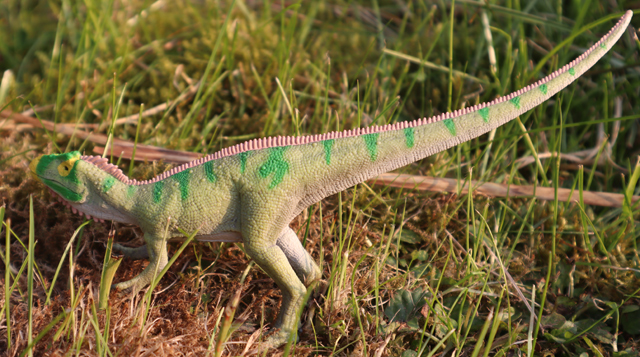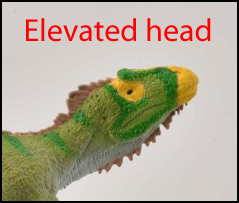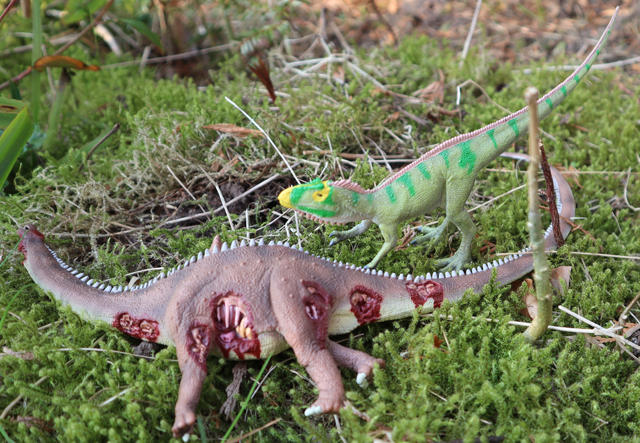CollectA Neovenator Scenting Prey Reviewed
Everything Dinosaur team members have been so impressed with the first batch of new for 2021 CollectA prehistoric animal figures that they have decided to review them all. Today, it is the turn of the CollectA Neovenator scenting prey dinosaur model. This figure replaces an earlier version of the theropod Neovenator within the CollectA Age of Dinosaurs Popular range.
Neovenator salerii
The CollectA Neovenator scenting prey has been beautifully painted. The light green tones contrast well with the striking darker green stripes that run from the nape of the neck right down to the model’s long tail. The tail makes up around 50% of the entire figure’s length. The body proportions of the Neovenator model reflect the graceful and lightweight nature of the dinosaur’s skeleton. Neovenator being regarded as relatively lightly built for a large predator with a gracile body plan. The grasping hands have been sculpted extremely well and the claws are skilfully painted. Their battleship grey colour matches the toe claws.
The pale underside provides a sharp contrast to the colouration on the flanks and the CollectA model has been given a row of small wattles that run down the neck. There is a row of similarly coloured spines that extend from the back of the skull to the tip of the tail. These spines are enlarged over the hips and immediately behind the head.

Features of the Skull
The figure is named “scenting prey” as an analysis of Neovenator cranial material published in 2017 revealed a substantial network of neurovascular canals in the upper jaw (premaxilla and maxilla) that were linked to the external surfaces of the bones in the jaw. The scientists concluded that this may have been a specialised tactile organ, enabling Neovenator to sense its environment through its jaw. These canals could have sensed jaw pressure, assisting this dinosaur to avoid bone when feeding, or this sensory organ could have played a role in intraspecies recognition and behaviour, or even assisted Neovenator in locating suitable nesting sites. The large nostrils suggest that this dinosaur had a powerful sense of smell. To read more about this research: The Sensitive Face of Neovenator.

Taxonomic Position Uncertain
The taxonomic classification of Neovenator remains uncertain, despite nearly 70% of the fossil skeleton being known to science. When first described in 1996, it was thought to have affinities with the Allosauridae family. Subsequent studies have challenged this suggesting a placement within the carcharodontosaurids.
The elevated head shows lots of amazing detail. The dark green markings that run from the eye socket down to the bottom jaw and then up to the postorbital bone are in stark contrast to the bright yellow jaw tips and the yellow patch that surrounds the eye.

This is an exquisitely created dinosaur model and Everything Dinosaur highly recommends the CollectA Age of Dinosaurs Popular Neovenator scenting prey.
To view the CollectA Neovenator scenting prey figure and the rest of the models in the CollectA Prehistoric Life range: CollectA Prehistoric Life Models and Figures.


